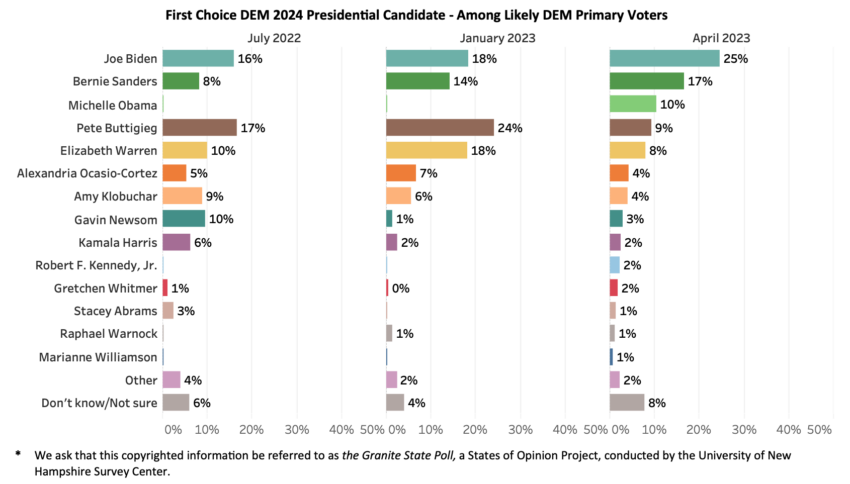Sam Bankman-Fried is too dangerous to be a free man in even the brief time left before the trial of the disgraced FTX founder begins in October, prosecutors assert.
Multiple sources have quoted prosecutor Danielle Sassoon telling a judge in a Manhattan court on Wednesday that, in the case of SBF, “no set of release conditions can assure the safety of the community.” This brought objections from SBF’s attorney Mark Cohen, who reportedly learned of the request just before court proceedings began. Moreover, the request contrasts jarringly with the lenient treatment of Theranos founder Elizabeth Holmes, whose vicious witness intimidation was an open secret.
Sam Bankman-Fried Dubbed a Flight Risk
The FTX founder has been living in California amid the flurry of litigation following the exchange’s collapse in November 2022. But his life is no picnic. His legal team is constantly on the defensive.
Accusations have flown back and forth in recent days. Besides the charges related to the implosion of FTX, Alameda Research has sued asset manager K5 Global to reclaim $700 million that SBF had donated. K5 Global claims their dealings were a totally legitimate business relationship.
Meanwhile, SBF’s lawyers have protested the actions of his replacement as CEO of FTX, John Ray III. In a recent court filing, they accused Ray of having made “repeated ad hominem attacks on Mr. Bankman-Fried—which have very little to do with his role recovering assets for FTX creditors.”
SBF has come under fire for leaking private Google Docs entries of his former girlfriend, Caroline Ellison, to the New York Times. He now faces charges of intimidation and evidence tampering, on top of everything else.
Ellison, who was head of Alameda Research, is widely expected to testify during the October trial.

Bankman-Fried Did Not Break the Law in Talking to the Press
But for all the unpleasantness, it is far from clear that SBF poses a danger to the community.
SBF’s lawyers argue that, in providing a reporter with the diary entries, he was merely granting the latter’s request for his side of the story. His actions were legal under the Fifth and Sixth Amendments. They did not violate the protective order and bail conditions to which SBF is subject, they maintain.
The lawyers made this point explicitly in their July 22 letter to Judge Lewis Kaplan of the Southern District of New York. They rebut charges of witness intimidation and evidence tampering.
They maintain that SBF was well within his rights to speak to the media and grant a routine request for comment. The letter states:
“Defense counsel independently verified that the documents were not part of the discovery and therefore did not implicate the protective order. Defense counsel contacted the prosecutors the following day and reported these findings and offered to provide copies of the documents to the Government’s filter team so that it could verify that the documents were not part of the discovery.”
A Double Standard
Observers are bound to ask whether the government, and some in the media, are treating a crypto entrepreneur unfairly. Holding him to a different standard than in another high-profile insolvency: the case of Theranos and its founder Elizabeth Holmes.
Many former employees of Theranos said they lived in fear of retaliation from the company’s founder and CEO. They dared not share what they knew about the firm’s deceptive marketing practices. To do so could be fatal for their careers and possibly their lives.
It’s not just that Holmes tampered with the intellectual property of scientists in her employ in order to take credit for their work, as John Carreyrou descibes in his book Bad Blood: Secrets and Lies in a Silicon Valley Startup.
The climate at Theranos was toxic. Holmes did not tolerate disloyalty, real or imagined. It was so bad that one scientist made a point of copying internal communications and documents before resigning.
None of this was a secret. The intimidation and abuse were the subject of articles by John Carreyrou in the Wall Street Journal as far back as 2015. Long before the case went to trial in September 2021.
That’s not even the worst of it. Ian Gibbons, a scientist who raised concerns about Theranos testing devices, lost his job for not keeping silent. He later committed suicide.
Gibbons’s widow blames the climate at the firm for his death. She says that Holmes never offered condolences or voiced remorse of any kind.
Yet, for all her well-known witness intimidation, Holmes was able to live comfortably and in total freedom. She did not see the inside of a cell until May 2023, nearly two years after her trial began.
A stark contrast with the measures that prosecutors in the FTX case now publicly advocate. Even without credible evidence that SBF’s dealings with reporters violate any law or term of his release.
A crypto entrepreneur, it seems, is far more dangerous than an ex-CEO whose ruthlessness drove a potential whistleblower to suicide.
Trusted
Disclaimer
In compliance with the Trust Project guidelines, this opinion article presents the author’s perspective and may not necessarily reflect the views of BeInCrypto. BeInCrypto remains committed to transparent reporting and upholding the highest standards of journalism. Readers are advised to verify information independently and consult with a professional before making decisions based on this content. Please note that our Terms and Conditions, Privacy Policy, and Disclaimers have been updated.

